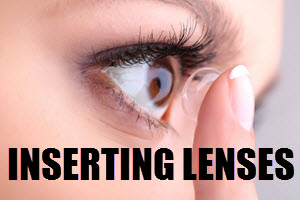The Importance of Decorative Lenses in Theater
Theatrical performances often rely heavily on visual storytelling to convey narratives and deepen audience engagement. An integral part of this visual storytelling is the appearance of characters, which significantly contributes to storytelling and character development. Among the various tools used by makeup artists and costume designers, decorative contact lenses have gained popularity due to their capacity to augment the appearance of characters, thereby enriching the theatrical experience.
Enhancing Character Realism
In the realm of theater, achieving a high degree of realism or otherworldly presence in a character is pivotal. Decorative contact lenses serve as a powerful tool to fulfill these objectives. When a production demands that characters appear fantastical or alien, particularly in genres like fantasy or science fiction, contact lenses are employed to transform the natural eye color into unusual shades or intricate patterns. This transformation assists the audience in instantly recognizing the character’s essence or origin, thereby heightening the suspension of disbelief—a fundamental element in theater that allows audiences to immerse themselves in the unfolding drama.
Facilitating Character Transformation
The adoption of decorative lenses extends beyond the realms of mere costume and makeup. They play a significant role in assisting actors in their journey to embody characters vastly different from their own personas, whether by age, disposition, or cultural background. For instance, an actor portraying an elderly character or one from a different ethnic background might utilize lenses to alter their eye color, thus rendering the transformation more convincing and complete in the eyes of the audience. When eye color is harmonized with other facial aesthetics like prosthetics or specialized makeup, it results in a more seamless and authentic character portrayal.
Enhancing Visual Impact
Creating a memorable visual impact in theatrical productions, particularly those with large casts or expansive staging, poses a unique challenge. Decorative lenses provide an opportunity to introduce distinctive visual elements that not only enhance the character’s individuality but also contribute to the overall visual tapestry of the production. Such lenses can draw focus to specific characters in ensemble scenes, guiding the audience’s attention to crucial narrative points or significant interactions. The contrast brought about by striking eye colors can be pivotal in capturing audience interest and emphasizing character distinction amidst visual complexities.
Examples in Theater and Film
The effectiveness of decorative lenses is well-documented in a variety of successful theater and film productions. For instance, the musical *Cats* is renowned for its use of lenses that emulate feline eyes, thus intensifying the animalistic portrayal of its characters. Similarly, in productions of *The Phantom of the Opera*, decorative lenses are frequently employed to underscore the disfigured countenance of the Phantom, lending the character a mysterious and eerie allure. These examples underscore the lenses’ ability to reinforce character traits and enhance the visual storytelling experience.
Safety Considerations
While the artistic benefits of decorative lenses in theater are substantial, attention to safety cannot be overstated. It is imperative that only professional-grade lenses, which adhere to safety standards and are fitted by licensed eye care professionals, are used in theatrical settings. This precaution helps prevent potential eye irritation, damage, or discomfort. Furthermore, performers must be well-versed in the correct usage, care, and maintenance of these lenses to safeguard eye health over the course of the performance. Regular consultations with optometrists can ensure any issues are promptly addressed.
Conclusion
In sum, decorative lenses serve as a vital resource in the domain of theatrical productions. They contribute to character development, facilitate audience engagement, and enhance visual storytelling by offering an additional layer of authenticity and aesthetic appeal. As long as safety measures are meticulously observed, these lenses can significantly elevate a production’s overall impact. For those seeking further information on specifications and usage guidelines, theater professionals are encouraged to consult resources available through reputable organizations such as the American Academy of Ophthalmology or the British Contact Lens Association.
By tapping into the potent capabilities of decorative lenses, theater practitioners can explore new dimensions of creativity, pushing the boundaries of both visual and narrative storytelling. The continuous advancement in lens technology and production techniques promises even greater opportunities for theatrical innovations, inviting audiences into ever more enchanting and believable worlds. In their embrace of these tools, theater artists ensure that the stage remains a dynamic and compelling space where stories come vividly to life through sight and imagination.



 Cosmetic contact lenses
Cosmetic contact lenses